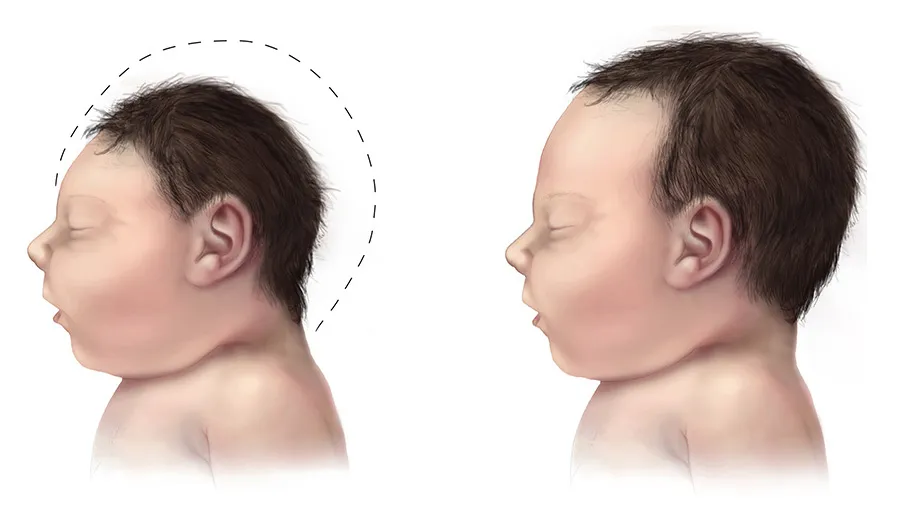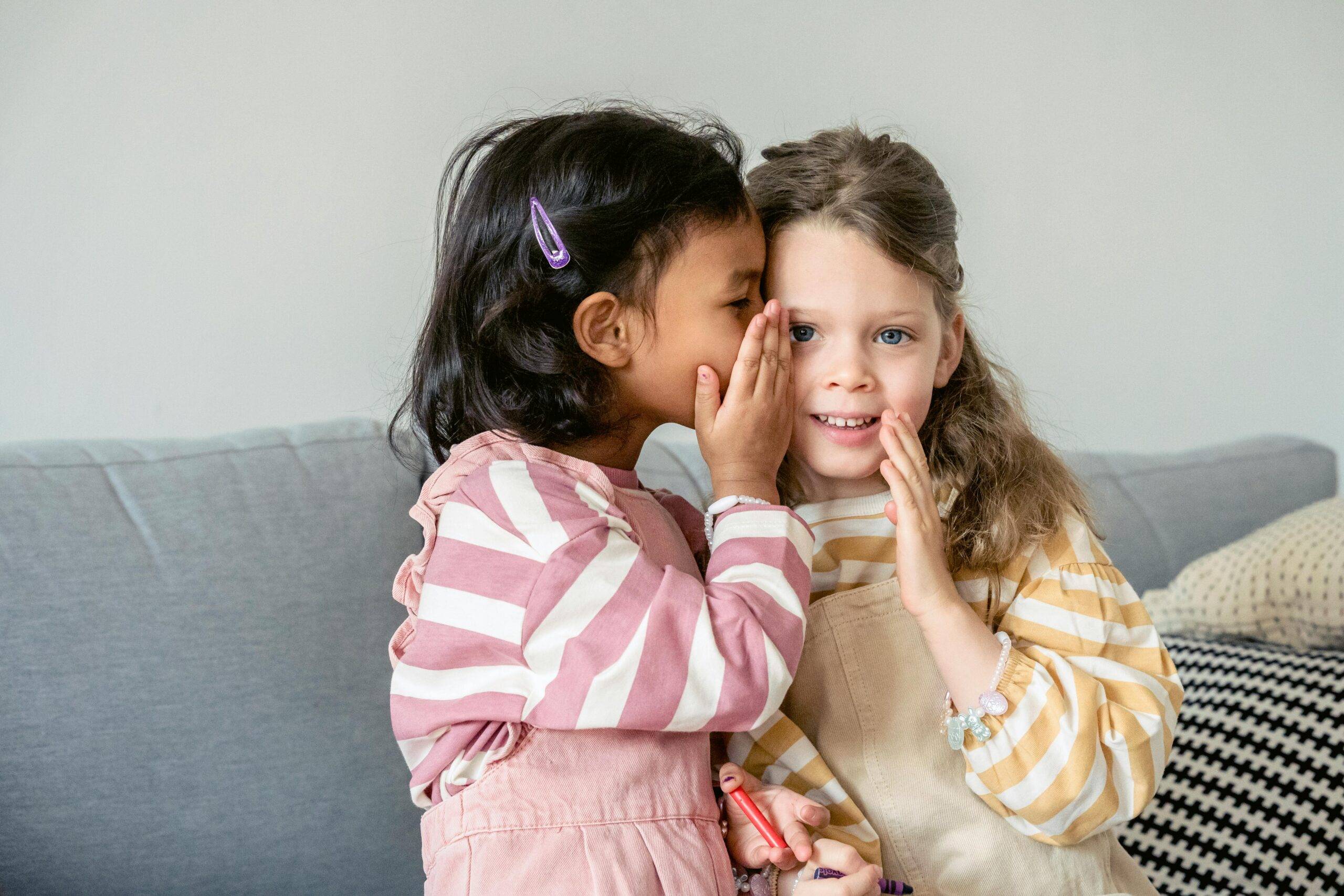Perhaps it’s time to clear some common misconceptions about allergies, especially if you believe your child has one. You’ve heard someone say they have allergies when in reality, they just mean they don’t like something. Everyone’s been there!
It’s not that simple. The reactions resulting from your child’s overactive immune system lead to what we know as allergies.
Our immune system is a fascinating thing. It’s like a team of superheroes protecting our bodies from foreign invaders such as viruses and bacteria. It’s made up of different cells from the different organs of the body.
However, there are instances when your child’s immune system gets overzealous. It mistakenly views harmless things as dangerous invaders. It then goes into an attack mode that triggers an allergic reaction.

Allergens and Symptoms
Let’s talk about some of the pesky allergens that can cause problems for kids, especially during the fall season. We know it can be tough when the days get shorter, and we spend more time inside.
Common Indoor Allergens
- Dust
Dust mites, pollen, mold, and animal dander are collectively described as dust.
- Fungi
Tiny molds that cannot be seen with the naked eye are known as fungi.
- Pets
Don’t forget your furry friends living in your home such as cats, dogs, guinea pigs, gerbils, and rabbits.
- Clothing and toys
Even clothing and toys made with animal hair can be a problem for some kids.
- Latex
Let’s not overlook latex which is everywhere, from rubber gloves to toys and balloons, and even the elastic in our socks and underwear.
- Cleaning products
Some cleaning products and enzyme bleaches contain bacterial enzymes that can trigger allergies
Allergy Symptoms
- Eyes, ears, nose, and mouth
Your child manifests redness, puffiness, and itchiness in these areas, along with sneezing, runny nose, and postnasal drip. They may rub their noses or feel some swelling and congestion. Plus, they feel itchy in their ear canals or mouth and throat.
- Lungs
Allergies lead to dry, hacking cough or wheezing, making it difficult for your child to catch their breath. They feel chest tightness and a low tolerance for exercise. Rapid breathing or shortness of breath are also other indicators.
- Skin
Observe any itchy, red patches of eczema or welts known as hives that are manifested on the skin.
- Digestive system
Your child may complain of cramps, discomfort, diarrhea, nausea, or vomiting.
- Others
Your child complains of headaches, restlessness, irritability, and excessive fatigue.

How Your Pediatrician Can Help Diagnose Allergies
It isn’t easy to detect whether the symptoms your child manifests are related to allergies. It’s because allergy symptoms vary between individuals.
The best thing to do is to schedule a consultation with your pediatrician. From there, they can point you in the right direction. The first step is to determine the causes of the symptoms, through an allergy testing procedure, and then recommend the right meds.
During the consult, your doctor will shed light on factors that you might haven’t considered. He will come up with a treatment plan if the symptoms are severe. In some instances, your pediatrician will give your little one a referral to a specialist.
But, your doctor won’t stop there. They will monitor the progress of their recommended treatment. Hence, it’s expected that, as the patient, you will do full compliance with the diagnostics and the prescribed medications.
Therefore, with a consultation from your pediatrician, detecting the symptoms will be manageable. You will find that managing the symptoms of your child’s allergies will be easier. Together with your child’s doctor, you will be able to care for your child better.
Subjecting Your Child to Allergy Testing
It’s tough to see your child suffering from allergies. One way to help them is through allergy testing. This procedure helps identify the potential allergens causing the symptoms. Once the allergen is known, your child can then avoid the triggers.
The types of tests to determine allergies are the following:
1. Skin Test
A common approach involves scratch skin tests, in which small amounts of allergen extracts are gently scratched over the skin’s surface.
Another option is the intradermal technique involves injecting extracts under the skin to see how the body reacts. Your doctor will determine which tests are best for your child.
2. Radiographs and Imaging Tests
Radiographs or X-ray films are helpful to rule out conditions that mimic asthma. Your pediatrician may still recommend this to identify other factors causing the symptoms.
3. Lung Function Tests
Typically recommended for children who are showing asthma symptoms. This test is easy and painless and the results help you understand the condition of your child better.
Your child will blow into a mouthpiece attached to a pulmonary function monitor. If your child can’t exhale within the timeframe, additional tests to confirm asthma are needed.
Another option is giving your child a dose of bronchodilator medication. If the airflow improves after the medication, your child may be diagnosed with asthma. From there, your doctor will develop a treatment plan to manage the symptoms.
4. Sweat Test
This test measures certain minerals in your child’s sweat. This is a simple and painless test that reveals whether cystic fibrosis is the underlying cause of your child’s symptoms and not simple allergies.
Treatment Options and Allergy Management
Give your child the right medicine
It’s so disheartening to frequently see your child suffer from allergy symptoms like sneezing or itchy eyes. Nevertheless, you can always give medicine to help them feel better. Consult your doctor to know what meds to give, how much, and when to give.
Here’s a list of the medications to alleviate allergy symptoms:
- Antihistamines
Antihistamines work by mitigating allergic reactions in the tissues. Your pediatrician prescribes this if your child manifests mild symptoms. However, there are over-the-counter (OTC) antihistamines that cause drowsiness.
It would be best to give this med in the evening at bedtime.
- Cromolyn
For nasal allergy symptoms, cromolyn sodium is what your child needs. Some people take this daily for chronic problems while others only take this when needed. This is an OTC drug, hence, you can buy it without a prescription.
Many mothers make this drug a part of the allergy regimen of their little ones. It would be best if you administered nasal cromolyn frequently, three or four times a day. This is a safe option since it has minimal or no side effects on children.
- Decongestants
Your child’s doctor may recommend decongestants for allergies due to nasal congestion. Good options are nose sprays or decongestants applied topically.
Unfortunately, these can’t be used for an extended period due to the rebound effect. This means that it can worsen a simple stuffy nose. Note that this med provides temporary relief of the symptoms, but doesn’t cure the allergies.
- Nasal Corticosteroids
These medicines are steroids, which may have a bad reputation. But when treating the symptoms of certain allergic reactions, they are real superheroes!

“Cortisones” as these are usually called, stop allergy symptoms in their tracks. Get your doctor’s advice to determine which form of steroid treatment your child should implement for their needs.
Consider giving your child allergy shots.
Are your child’s allergy symptoms still bothering them, despite trying various medications and avoiding allergens? You may want to ask your child’s pediatrician about allergy immunotherapy!
They may recommend allergy immunotherapy, or allergy shots, to help with the allergic symptoms. A confirmed diagnosis is needed before recommending this treatment. This is a long-term solution for helping your child manage their symptoms.
The good news is that you won’t heavily rely on medicines with this treatment plan.
Tips for Supporting Your Child with Allergies
Every day can be a battle when your child is suffering from the symptoms of allergies. Here are some tips that can help you support your child with allergies.
- Avoid the allergens that trigger the symptoms.
For example, you need to do something if you notice that your child manifests allergic reactions when they are near your pets. Sneezing and wheezing can be extreme for some children exposed to hairy pets.
Your pets should be restricted to certain areas of your house. Wash bedding and stuffed toys regularly, and avoid certain foods. Identifying and minimizing exposure to allergens help reduce your child’s symptoms.
2. Lifestyle adjustments.
Invest in an air purifier for your home. Vacuum frequently to improve indoor air quality. Keep windows and doors closed, particularly during the peak allergy season. Also, boost your little one’s immunity by keeping them hydrated, and feeding healthy food.
3. Natural remedies.
Saline nasal sprays, steam therapy, and drinking herbal teas are some natural remedies. However, it’s important to consult us before trying any natural remedies, as some may not be appropriate for children.
4. Consult your pediatrician.
Your pediatrician will develop an allergy management plan. The doctor can properly diagnose your little one, offer suitable treatment options, and help you identify potential triggers.
With your child’s doctor, you can develop a plan tailored fit to support your child with allergies, thereby improving their overall health and well-being.
You can help your child manage their allergies!
Seeing your little one suffer from the symptoms of their allergies can be heartbreaking. As their primary caregiver, you can do many things to help them.
Please work with your child’s doctor to give them a treatment plan tailored fit for them. Put your trust in your pediatrician because they only want the best for your child, too.
With your doctor’s help, you find the right treatment plan, and you will be a step closer to seeing your little ones live a happy and healthy life, albeit the challenges brought about by pesky allergies.



